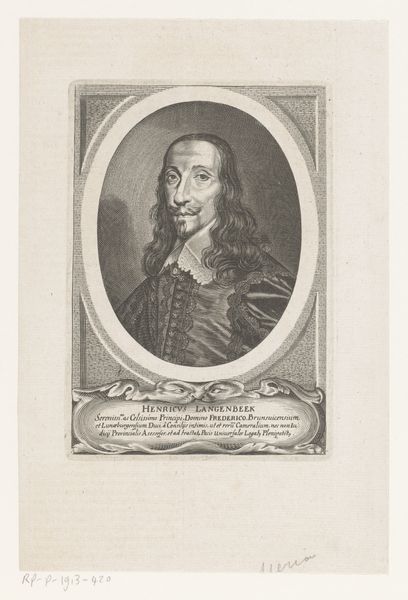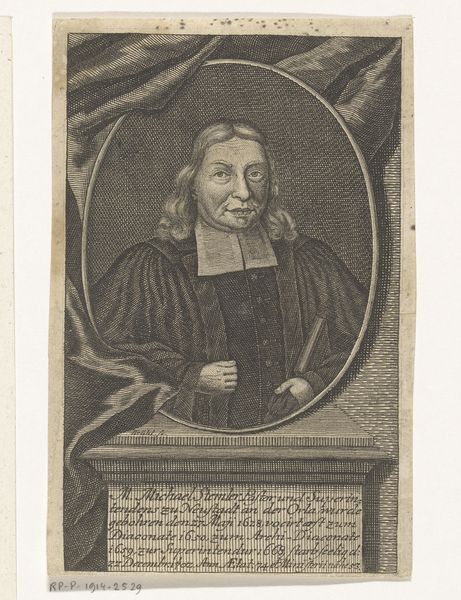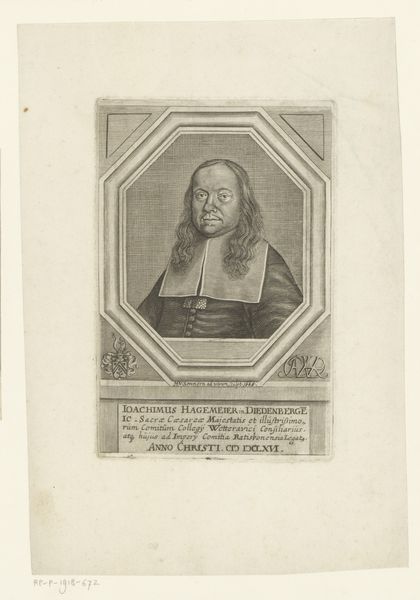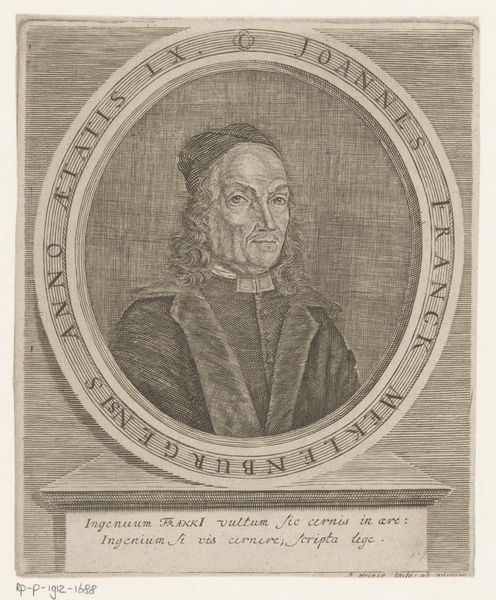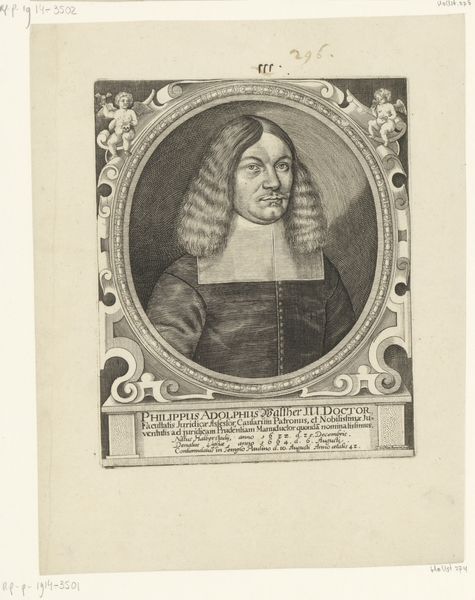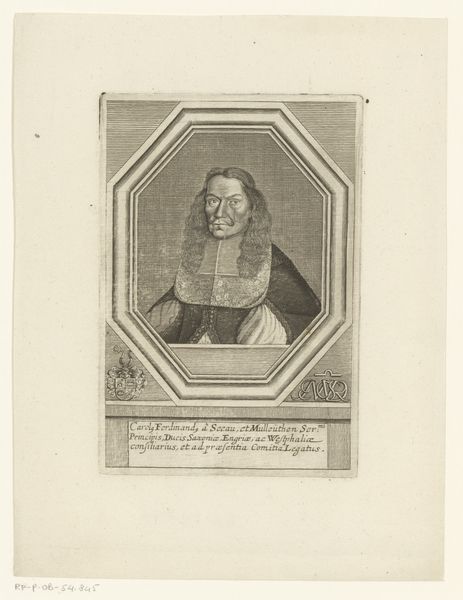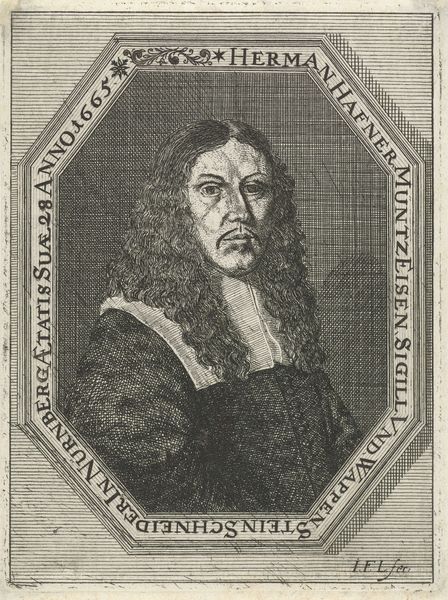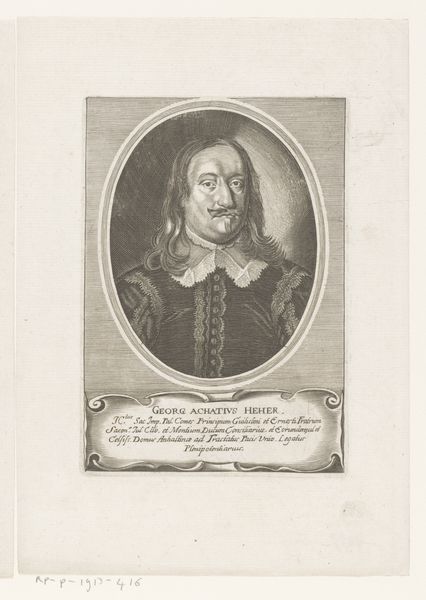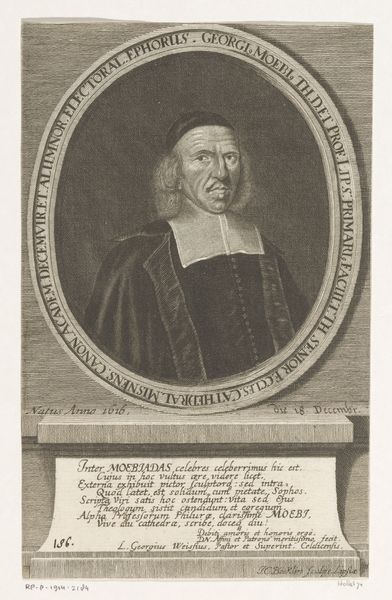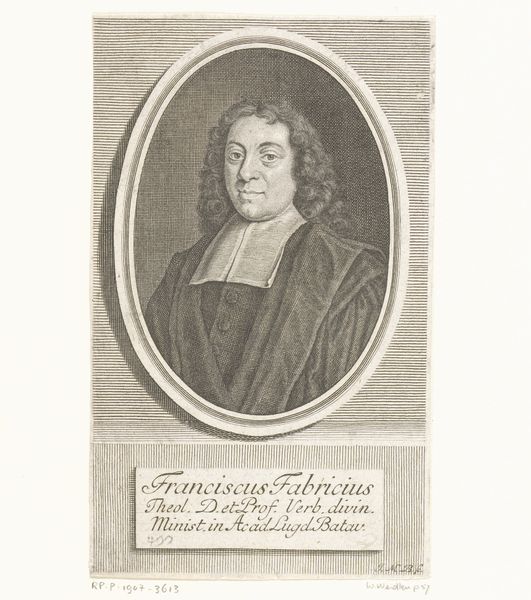
print, engraving
#
portrait
#
baroque
# print
#
old engraving style
#
caricature
#
portrait drawing
#
engraving
Dimensions: height 13 mm, width 98 mm
Copyright: Rijks Museum: Open Domain
Curator: Before us, we have a striking engraving: "Portret van Martin Sigmund Gammersfelder" dating sometime between 1669 and 1722. It's currently held in the Rijksmuseum. What’s your initial take? Editor: There's an immediacy to it, a bluntness that's unusual for formal portraiture. The detail is impressive in this old engraving style, but I feel like the overall mood leans toward the satirical—almost a caricature. Curator: It's fascinating that you pick up on a potential satirical reading. During this period, printed portraits served diverse social functions. It's possible that we might perceive some contemporary element that, given shifts in politics and print culture, feels unusual today. Editor: The details—that somewhat severe collar, the specific set of his mouth, it reads like the symbols of authority undercut slightly, like there might have been contemporary mockery here. And it seems signed by one Georg Fennitzer. Curator: That's precisely the kind of analysis that contextualizes this portrait. Fennitzer, as the engraver, operated within a specific social landscape, and his choices certainly influenced how Gammersfelder was presented and perceived, it definitely tells something. Considering that portraits reinforced hierarchies, it is tempting to question whether that's completely the case here. Editor: It makes me consider the intended audience for something like this. A print means wider circulation than a painting, yes? How does that shape our view? The artist is not working only with the portrayed as the audience but also all potential viewers? Curator: Precisely! This touches upon the essence of understanding images historically. Prints were more accessible, impacting civic identity in ways unique to print culture. Moreover, prints became part of collections, serving memorial or didactic roles, so you start to see the layering of meaning which is the result of changes in politics, taste and technology. Editor: I do feel an inherent, almost humorous symbolism within. Whether intended or a projection of time and cultural differences... It triggers these feelings very profoundly in the observer. Curator: These layers definitely add nuance to our encounter with the image, as it helps us reconsider assumptions we might hold of this style. Editor: It highlights the lasting interplay between representation, power, and, let’s say, a good dose of humor.
Comments
No comments
Be the first to comment and join the conversation on the ultimate creative platform.

